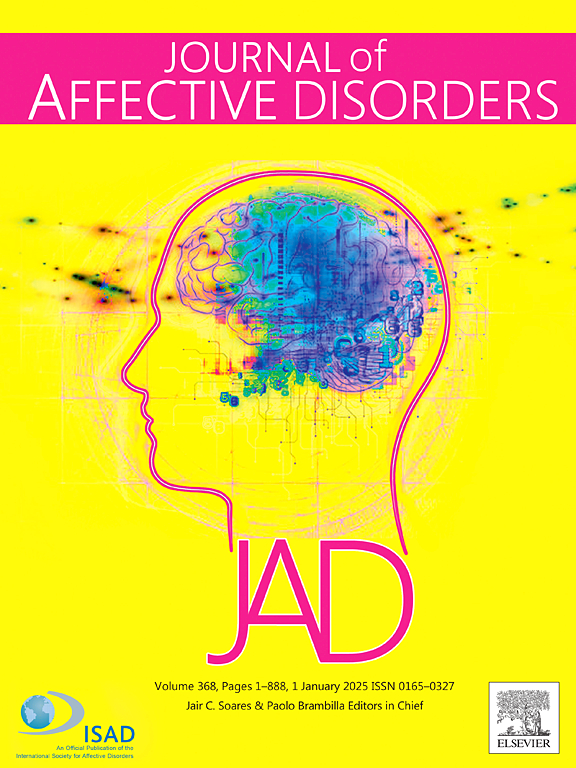Efficacy of a mobile health with tailored personalized exercise rehabilitation program for ADHD children: randomized controlled trial
IF 4.9
2区 医学
Q1 CLINICAL NEUROLOGY
引用次数: 0
Abstract
Background
Interventions delivered via mobile health (mHealth) could increase access to guided exercise interventions. We aimed to investigate effectiveness of a self-developed mHealth app-supported tailored exercise rehabilitation program on core symptoms (i.e., inattention and hyperactivity/impulsivity) and executive functions (EFs, specifically inhibitory control, working memory, and cognitive flexibility) in children with attention-deficit/hyperactivity disorder (ADHD).
Methods
Children with ADHD aged 6–12 (n = 144) were randomly assigned to one of three groups and were offered interventions 3 times a week over a period of 12 weeks, and each session lasted 45–60 min. Experimental group 1 (EG1, n = 53) received exercise interventions through videos from an exercise library that were recommended based on each participant's assessment results via mHealth used by both children and their parents. Experimental group 2 (EG2, n = 45) received integrated merging of physically and cognitively demanding exercise interventions implemented offline by coaches, and control group (CG, n = 46) received minimal intervention with physical activity education. Outcomes were parent-rated symptoms of inattention and hyperactivity/impulsivity, which were assessed using the Swanson, Nolan, and Pelham-version IV rating scale, and three EFs via the Stroop Color and Word Test for inhibitory control, the Rey-Osterrieth Complex Figure Test for working memory, and the Trail Making Test for cognitive flexibility. A linear mixed effects model was used to investigate the intervention effect, and the dependent variable was changed from baseline to the endpoint. Potential confounding variables (i.e., age, sex, intelligence quotient, ADHD subtype, and medicine intake) were used as covariates.
Results
EG1 (β = −3.54, SE 0.96, p < 0.001) and EG2 (β = −3.98, SE 1.00, p < 0.001) significantly reduced inattention scores compared to CG, and EG1 (β = −2.88, SE 0.81, p < 0.001) and EG2 (β = −3.50, SE 0.84, p < 0.001) also significantly reduced hyperactivity/impulsivity scores compared with CG. EG1 (β = −8.48, SE 3.27, p = 0.016) and EG2 (β = −9.41, SE 3.46, p = 0.016) significantly improved inhibitory control compared with CG. EG1 (β = 4.00, SE 1.07, p < 0.001) and EG2 (β = 5.72, SE 1.14, p < 0.001) significantly improved delayed details of working memory compared with CG. For cognitive flexibility, significant group differences were observed in EG1 versus CG (β = −17.9, SE 8.57, p < 0.039), EG2 versus CG (β = −39.80, SE 9.55, p < 0.001), and EG1 versus EG2 (β = 21.9, SE 9.12, p = 0.027).
Limitation
Lack of posttraining follow-up.
Conclusions
mHealth with a tailored personalized exercise rehabilitation program had favorable effects on core symptoms and EFs in children with ADHD, and demonstrated comparable effects to offline face-to-face guidance in most cases.
移动健康与量身定制的个性化运动康复计划对多动症儿童的疗效:随机对照试验
背景:通过移动医疗(mHealth)提供的干预措施可以增加获得指导运动干预措施的机会。我们的目的是调查自主开发的移动健康应用程序支持的定制运动康复计划对注意力缺陷/多动障碍(ADHD)儿童的核心症状(即注意力不集中和多动/冲动)和执行功能(EFs,特别是抑制控制、工作记忆和认知灵活性)的有效性。方法将6-12岁ADHD儿童(n = 144)随机分为三组,每周进行3次干预,持续12周,每次持续45-60分钟。实验组1 (EG1, n = 53)通过运动库中的视频进行运动干预,这些视频是根据儿童及其父母使用的移动健康评估结果推荐的。实验2组(EG2, n = 45)接受教练离线实施的身体和认知要求的综合运动干预,对照组(CG, n = 46)接受体育活动教育的最小干预。结果是父母评定的注意力不集中和多动/冲动症状,使用Swanson, Nolan和pelham - IV版评定量表进行评估,并通过Stroop颜色和单词测试进行抑制控制,Rey-Osterrieth工作记忆复杂图形测试和认知灵活性的轨迹测试进行三个ef。采用线性混合效应模型考察干预效果,因变量由基线改为终点。潜在的混杂变量(即年龄、性别、智商、ADHD亚型和药物摄入)被用作协变量。结果g1 (β = - 3.54, SE 0.96, p <;0.001)和EG2 (β = - 3.98, SE 1.00, p <;0.001)与CG和EG1相比,注意力不集中得分显著降低(β = - 2.88, SE 0.81, p <;0.001)和EG2 (β = - 3.50, SE 0.84, p <;0.001)也显著降低了与CG相比的多动/冲动得分。EG1 (β =−8.48,SE 3.27, p = 0.016)和EG2 (β =−9.41,SE 3.46, p = 0.016)与CG相比显著改善了抑制控制。EG1 (β = 4.00, SE 1.07, p <;0.001)和EG2 (β = 5.72, SE 1.14, p <;0.001)显著改善了工作记忆的延迟细节。在认知灵活性方面,EG1与CG的组间差异显著(β = - 17.9, SE 8.57, p <;0.039),当与CG(β=−39.80、9.55,p & lt;0.001),烤箱和EG2(β= 21.9,SE 9.12, p = 0.027)。局限性:缺乏培训后随访。结论smhealth与量身定制的个性化运动康复计划对ADHD儿童的核心症状和ef有良好的影响,并且在大多数情况下表现出与线下面对面指导相当的效果。
本文章由计算机程序翻译,如有差异,请以英文原文为准。
求助全文
约1分钟内获得全文
求助全文
来源期刊

Journal of affective disorders
医学-精神病学
CiteScore
10.90
自引率
6.10%
发文量
1319
审稿时长
9.3 weeks
期刊介绍:
The Journal of Affective Disorders publishes papers concerned with affective disorders in the widest sense: depression, mania, mood spectrum, emotions and personality, anxiety and stress. It is interdisciplinary and aims to bring together different approaches for a diverse readership. Top quality papers will be accepted dealing with any aspect of affective disorders, including neuroimaging, cognitive neurosciences, genetics, molecular biology, experimental and clinical neurosciences, pharmacology, neuroimmunoendocrinology, intervention and treatment trials.
 求助内容:
求助内容: 应助结果提醒方式:
应助结果提醒方式:


